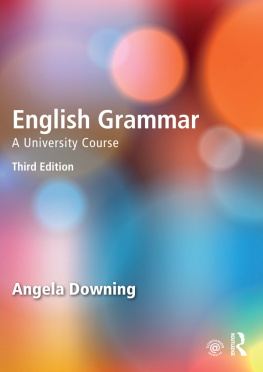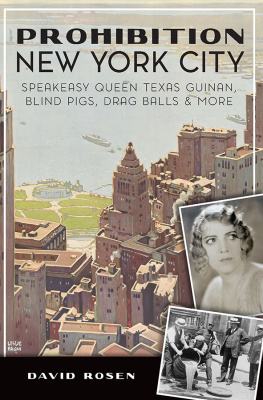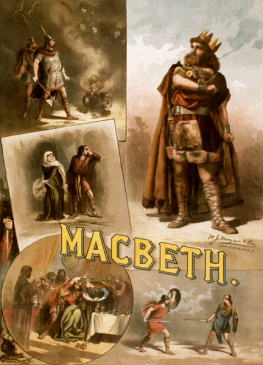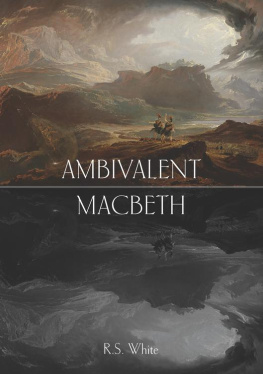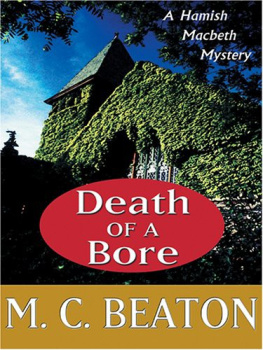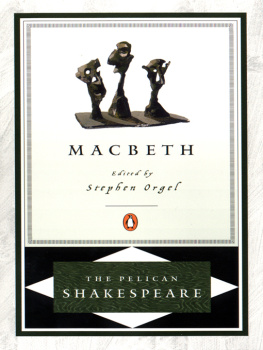David Rosen - Verdis Macbeth : a sourcebook
Here you can read online David Rosen - Verdis Macbeth : a sourcebook full text of the book (entire story) in english for free. Download pdf and epub, get meaning, cover and reviews about this ebook. City: Cambridge, year: 1984, publisher: Cambridge University Press, genre: Children. Description of the work, (preface) as well as reviews are available. Best literature library LitArk.com created for fans of good reading and offers a wide selection of genres:
Romance novel
Science fiction
Adventure
Detective
Science
History
Home and family
Prose
Art
Politics
Computer
Non-fiction
Religion
Business
Children
Humor
Choose a favorite category and find really read worthwhile books. Enjoy immersion in the world of imagination, feel the emotions of the characters or learn something new for yourself, make an fascinating discovery.
- Book:Verdis Macbeth : a sourcebook
- Author:
- Publisher:Cambridge University Press
- Genre:
- Year:1984
- City:Cambridge
- Rating:5 / 5
- Favourites:Add to favourites
- Your mark:
- 100
- 1
- 2
- 3
- 4
- 5
Verdis Macbeth : a sourcebook: summary, description and annotation
We offer to read an annotation, description, summary or preface (depends on what the author of the book "Verdis Macbeth : a sourcebook" wrote himself). If you haven't found the necessary information about the book — write in the comments, we will try to find it.
Verdis Macbeth : a sourcebook — read online for free the complete book (whole text) full work
Below is the text of the book, divided by pages. System saving the place of the last page read, allows you to conveniently read the book "Verdis Macbeth : a sourcebook" online for free, without having to search again every time where you left off. Put a bookmark, and you can go to the page where you finished reading at any time.
Font size:
Interval:
Bookmark:
Basic Concepts
Language and Meaning
A functional grammar aims to match forms to function and meaning in context. This Unit introduces three strands of meaning that form the basis of a functional interpretation of grammar: the representational, the interpersonal and the textual.
Each of these strands is encoded in the clause (or simple sentence) as a type of structure. The three structures are mapped onto one another, illustrating how the three types of meaning combine in one linguistic expression.
Let us start from the basic concept that language is for communication. Here is part of a recorded conversation taken from a sociological project of the University of Bristol. The speakers are Janice, a girl who runs a youth club and disco in an English town, and Chris, one of the boys in the club, who is 19 and works in a shop. In the dialogue, we can distinguish various types of communicative act, or speech act , by which people communicate with each other: making statements, asking questions, giving directives with the aim of getting the hearer to carry out some action, making an offer or promise, thanking or expressing an exclamation.
| Offer | J: | If you like, Ill come into your shop tomorrow and get some more model aeroplane kits. |
| Reminder | C: | O.K. Dont forget to bring the bill with you this time. |
| Promise | J: | I wont. |
| Question | Do you enjoy working there? | |
| Statements | C: | Its all right, I suppose. Gets a bit boring. Itll do for a while. |
| Statement | J: | I would have thought you were good at selling things. |
| Statement | C: | I dont know what to do really. Ive had other jobs. My Dad keeps on at me to go into his business. He keeps offering me better wages, |
| Exclamation | but the last thing to do is to work for him! | |
| Question | J: | Why? |
| Echo question | C: | Why? You dont know my old man! I |
| Exclamations | wouldnt work for him! He always | |
| Statement | wanted me to, but we dont get on.... | |
| Question | Dyou think its possible to get me on a part-time Youth Leadership Course? | |
| Offer/Promise | J: | Ill ring up tomorrow, Chris, and find out for you. |
| Thanking | C: | Thanks a lot. |
In a communicative exchange such as this, between two speakers, the kind of meaning encoded as questions, statements, offers, reminders and thanks is interpersonal meaning. Asking and stating are basic communicative acts. The thing asked for or stated may be something linguistic such as information or an opinion ( Do you enjoy working there? Its all right, I suppose ) or it may be something non-linguistic, some type of goods and services, such as handing over the aeroplane kits.
This non-linguistic exchange may be verbalised by, for instance, Here you are but it need not be. Typically, however, when goods and services are exchanged, verbal interaction takes place too; for instance, asking a favour ( Do you think its possible to get me on a part-time Youth Leadership Course ?) or giving a promise ( Ill ring up tomorrow, Chris, and find out for you ) are carried out verbally.
The grammatical forms that encode two basic types of interpersonal communication stating and questioning are illustrated in section 1.3.2. The whole area is dealt with more fully in .
Every speech act, whether spoken or written, takes place in a social context. A telephone conversation, writing a letter, buying a newspaper, giving or attending a lecture, are all contexts within which the different speech acts are carried out. Such contexts have to do with our own or someone elses experience of life and the world at large, that is, the doings and happenings in which we are involved or which affect us.
Any happening or state in real life, or in an imaginary world of the mind, can be expressed through language as a situation or state of affairs . Used in this way, the terms situation or state of affairs do not refer directly to an extra-linguistic reality that exists in the real world, but rather to the speakers conceptualisation of it. The components of this conceptualisation of reality are semantic roles or functions and may be described in very general terms as follows:
- processes : that is, actions, events, states, types of behaviour;
- participants : that is, entities of all kinds, not only human, but inanimate, concrete and abstract, that are involved in the processes;
- attributes : that is, qualities and characteristics of the participants;
- circumstances : that is, any kind of contingent fact or subsidiary situation which is associated with the process or the main situation.
The following example from the text shows one possible configuration of certain semantic roles:

Participant, process and circumstances.
The kind of meaning expressed by these elements of semantic structure is representational meaning, or meaning that has to do with the content of the message. The various types of process, participants, attributes and circumstances are outlined in the following sections and described more fully in .
The clause or simple sentence is the basic unit that embodies our construal of repre- sentational meaning and interpersonal meaning. The clause is also the unit whose elements can be reordered in certain ways to facilitate the creation of textual meaning. The textual resources of the clause, such as the activepassive alternative, enable the representational strand and the interpersonal strand of meaning to cohere as a message, not simply as a sentence in isolation, but in relation to what precedes it in the discourse.
Each type of meaning is encoded by its own structures; the three types of structure combine to produce one single realisation in words.
To summarise, the three kinds of meaning derive from the consideration of a clause as: (a) the linguistic representation of our experience of the world; (b) a communicative exchange between persons; (c) an organised message or text. We now turn to the three types of structure that implement these meanings.
The representational meaning of the clause is encoded through the transitivity structures, whose elements of structure or functions include: Agent, Recipient, Affected, Process, Attribute and Circumstance, as described in . Some of these make up the semantic structure of the following example:

Semantic roles.
With a process of doing such as the action of giving, the Agent is that participant which carries out the action referred to by the verb; the Recipient is that participant who receives the goods or information encoded as the Affected. Circumstances attending the process are classified as locative, temporal, conditional, concessive, causal, resultant, among others.
The clause is also the major grammatical unit used by speakers to ask questions, make statements and issue directives. Unless the conversation is very one-sided, the roles of questioner and informant tend to alternate between the interlocutors engaged in a conversation, as can be seen in the exchange of speech roles between Chris and Janice.
Font size:
Interval:
Bookmark:
Similar books «Verdis Macbeth : a sourcebook»
Look at similar books to Verdis Macbeth : a sourcebook. We have selected literature similar in name and meaning in the hope of providing readers with more options to find new, interesting, not yet read works.
Discussion, reviews of the book Verdis Macbeth : a sourcebook and just readers' own opinions. Leave your comments, write what you think about the work, its meaning or the main characters. Specify what exactly you liked and what you didn't like, and why you think so.

